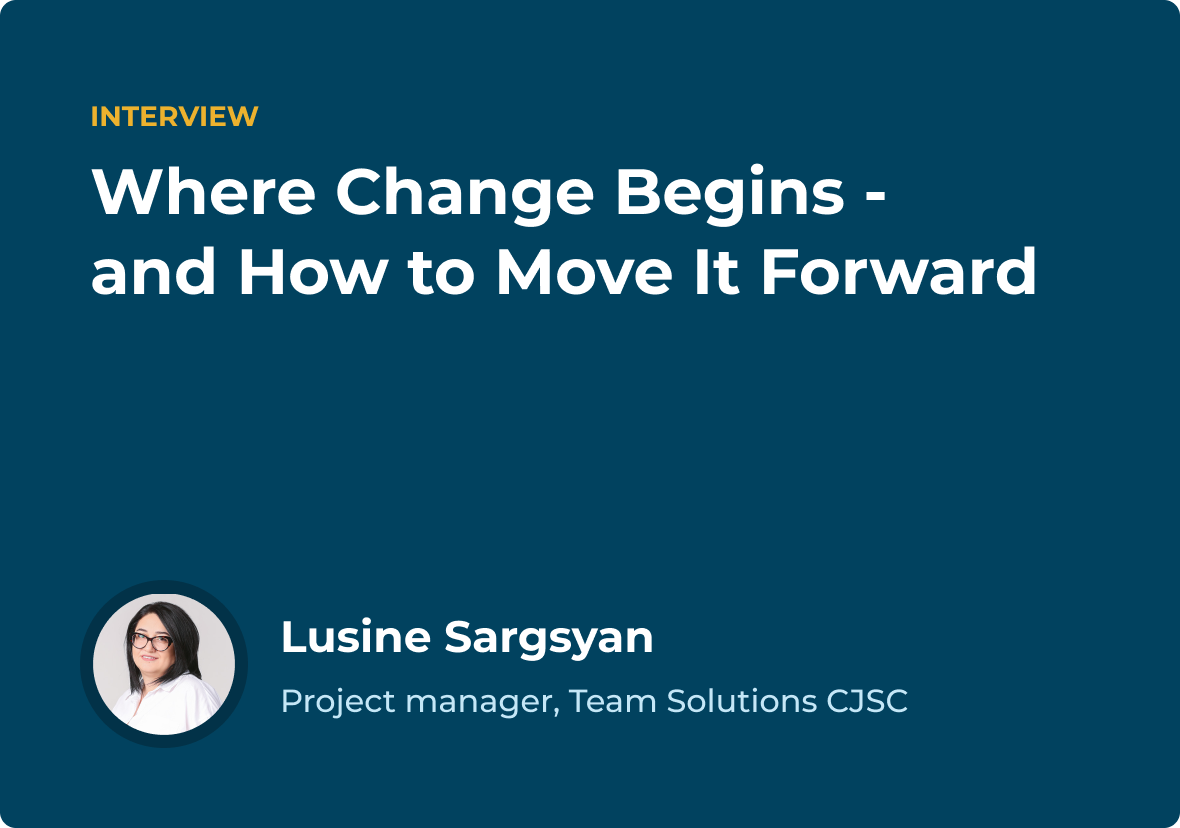
Interview with Lusine Sargsyan Zangezor Project Manager at Team Solutions CJSC
![]() By Anna Malikonyan
By Anna Malikonyan
![]() June 26, 2025
June 26, 2025

![]() By Anna Malikonyan
By Anna Malikonyan
![]() June 26, 2025
June 26, 2025
Q. In your experience supporting teams where Zangezor call center solution is integrated, what does managing change actually mean in practice?
Lusine: People often think change begins when something new is introduced — a tool, a policy, a process. However, the real work starts long before that. For me, managing change means guiding people from where they are now to a new way of working, step by step.
Change is not a single decision — it's a process. It starts with clarity: what’s changing, why now, and who it impacts. Then comes engagement — involving the right people, preparing them, supporting them through the transition. Without that structure, even the best ideas can fail.
Q. What makes change so difficult inside organizations — even when the solution is clear?
Lusine: Organizations often underestimate the emotional side of change. People worry about their role, their performance, their comfort zone.
Q. How do you know if an organization is ready for change?
Lusine: There are several factors:
When an organization is ready, change flows smoother because people feel part of it. Nevertheless, when readiness is low, it shows up quickly: confusion, silence, blame, or delays.
Q. What happens when no change management function is in place on the client side?
Lusine: I step in to provide support — not by owning their change, but by building some structure around it.
For example, I’ll have regular one-on-one calls with managers to ask key questions. Sometimes I organize short workshops to walk teams through what’s changing and what it means for them — not just the technical steps, but the “why” and “what’s in it for me.”
My job is to make the invisible work visible, and help them see that they’re not alone in this shift. It can even feel like psychological support. When people know what to expect, and know someone’s there to guide them, resistance drops and confidence builds.
Q. What role does middle management play in driving successful change?
Lusine: Middle managers are often at the center of every change. They are the ones who bridge the gap between leadership decisions and team execution. They communicate the change to their teams, explain what’s expected, manage questions or resistance.
Their responsibilities go far beyond just passing on instructions. They coach individuals, model new behaviors, manage concerns, and provide critical feedback upward.
Introduction
Why change is hard
Reediness to change
When no change team is in place
The role of middle management